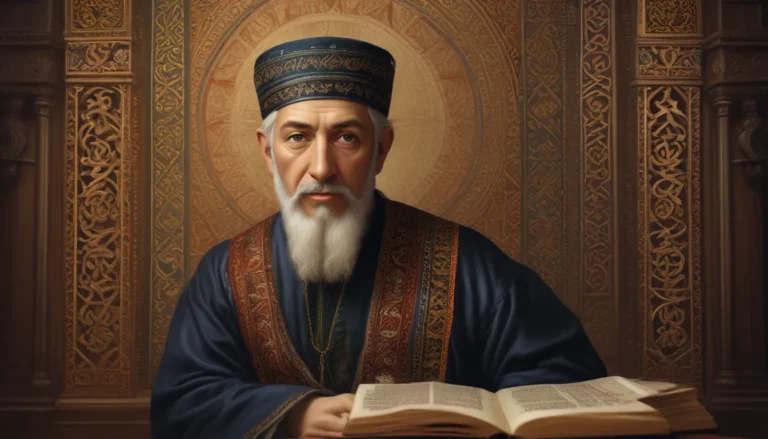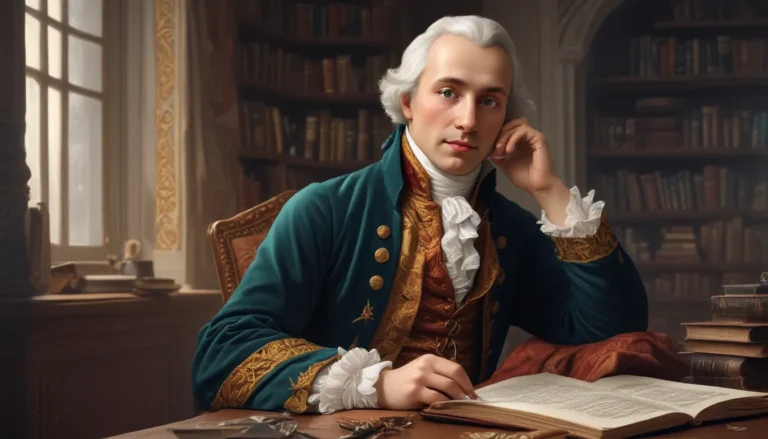The images in our articles may not match the content exactly. They are used to grab your attention, not to show the exact details in the text. The images complement the text but do not replace it.
Welcome to a fascinating exploration of the life and work of Max von Laue, a prominent figure in the world of physics. Born on October 9, 1879, in Germany, Von Laue’s scientific legacy continues to inspire and captivate scientists worldwide. In this article, we will delve into 19 mind-blowing facts about Max von Laue, shedding light on his groundbreaking discoveries, his influence on various scientific disciplines, and his enduring impact on the field of physics. Get ready to embark on a journey through the extraordinary life of Max von Laue, a true pioneer in the realm of science.
Unveiling Max Von Laue’s Contributions to Science
Max von Laue, a German physicist, achieved a remarkable feat with his groundbreaking discovery of X-ray diffraction. This revolutionary experiment unveiled the wave nature of X-rays and provided unprecedented insights into the atomic structure of crystals. His work in this field of crystallography not only transformed our understanding of atomic arrangements but also paved the way for advancements in various scientific fields, including medicine and materials science.
Key Takeaways:
- Max von Laue’s opposition to the Nazi regime and his dedication to scientific inquiry serve as a beacon of inspiration for future generations of scientists worldwide.
- His pivotal role in the development of crystallography and his advocacy for international scientific collaboration have left a lasting imprint on the scientific community.
The Path to Discovery: Von Laue’s Journey into X-ray Diffraction
Max von Laue’s extraordinary career began with his groundbreaking discovery of X-ray diffraction, a phenomenon that revolutionized the field of physics. By unraveling the mysteries of how X-rays interact with crystals, Von Laue opened up new avenues of exploration in crystallography. His work in this area not only laid the foundation for further scientific advancements but also showcased his ingenuity and dedication to unraveling the secrets of the microscopic world.
The Nobel Laureate: Von Laue’s Prestigious Recognition in Physics
In 1914, Max von Laue’s groundbreaking work on X-ray diffraction earned him the highest honor in the field of physics—the Nobel Prize. This prestigious recognition cemented Von Laue’s status as a trailblazing scientist whose contributions to the atomic world were truly exceptional. His research not only expanded our understanding of atomic structures but also set the stage for future breakthroughs in the realm of crystallography.
Mentorship and Scientific Legacy: Von Laue’s Enduring Influence
Max von Laue’s journey into the world of physics was shaped by his mentorship under renowned physicist Max Planck. Under Planck’s guidance, Von Laue honed his skills in theoretical physics and embarked on a path of groundbreaking research that would shape the course of scientific history. Despite facing initial skepticism, Von Laue’s perseverance and dedication to his work ultimately solidified his place as a pioneer in the field.
Beyond Boundaries: Von Laue’s Advocacy for Scientific Collaboration
Max von Laue’s belief in the power of international scientific collaboration was a driving force throughout his career. He actively promoted knowledge sharing and cooperation among scientists, emphasizing the importance of breaking down national boundaries in the pursuit of scientific discovery. His advocacy for collaboration continues to inspire a new generation of scientists to work together towards a common goal of advancing human knowledge.
Impact on Medical Imaging: Von Laue’s Contribution to Medicine
The impact of Max von Laue’s research extends beyond the realm of physics and into the field of medicine. His discovery of X-ray diffraction paved the way for significant advancements in medical imaging, leading to the development of diagnostic tools such as X-ray machines and CT scans. Von Laue’s work in this area revolutionized the field of medical diagnostics, saving countless lives and improving healthcare outcomes.
Recognitions and Honors: Celebrating Von Laue’s Contributions to Science
In addition to the Nobel Prize, Max von Laue received numerous accolades and awards throughout his illustrious career. His dedication to the field of physics and his groundbreaking research were widely recognized and celebrated by the scientific community. Von Laue’s legacy continues to inspire and motivate scientists to push the boundaries of knowledge and make meaningful contributions to the world of science.
Inspiring Future Generations: Von Laue’s Enduring Legacy
Max von Laue’s contributions to physics continue to inspire and shape the scientific landscape today. His groundbreaking work in X-ray diffraction and his unwavering dedication to scientific inquiry serve as a testament to the power of curiosity and perseverance. Von Laue’s legacy lives on in the hearts and minds of aspiring scientists around the globe, motivating them to pursue their own path of discovery and innovation.
Unlocking the Mysteries of the Natural World: Von Laue’s Lasting Impact
The insights gained from Max von Laue’s discoveries in X-ray diffraction have had a profound impact on our understanding of the natural world. His work continues to shape advancements in various scientific fields, from materials science to chemistry and beyond. Von Laue’s contributions have opened up new avenues of exploration and discovery, illuminating the intricate beauty of the microscopic universe.
Final Thoughts on Max Von Laue’s Scientific Journey
In conclusion, the 19 mind-blowing facts about Max von Laue offer a glimpse into the extraordinary life and legacy of this remarkable physicist. From his pioneering work in X-ray diffraction to his advocacy for international collaboration, Von Laue’s contributions to science have left an indelible mark on the world of physics. His enduring legacy serves as a source of inspiration for scientists of all generations, reminding us of the power of curiosity, perseverance, and collaboration in the pursuit of knowledge.
FAQs
Q: When was Max von Laue born?
A: Max von Laue was born on October 9, 1879.
Q: What was Max von Laue’s most significant contribution to science?
A: Max von Laue’s most significant contribution was the discovery of X-ray diffraction by crystals.
Q: What is crystallography?
A: Crystallography is the scientific study of crystals, including their structure, properties, and formation.
Q: Did Max von Laue win any awards for his work?
A: Yes, Max von Laue was awarded the Nobel Prize in Physics in 1914 for his discovery of X-ray diffraction.
Q: How did Max von Laue’s work impact other scientific disciplines?
A: Max von Laue’s work revolutionized fields such as chemistry, biology, and medicine by providing insights into the structure and properties of complex molecules.
Q: Did Max von Laue contribute to the field of education?
A: Yes, Max von Laue played a key role in mentoring young scientists and promoting educational initiatives throughout his career.
Q: What scientific organizations did Max von Laue help establish?
A: Max von Laue was instrumental in founding the International Union of Crystallography and the Max Planck Society.
Q: Are there any ongoing research projects inspired by Max von Laue’s work?
A: Yes, scientists continue to build upon Laue’s discoveries in crystallography, leading to advancements in materials science and other related fields.
As we reflect on the extraordinary achievements and profound impact of Max von Laue, we invite you to continue exploring the fascinating world of science. Dive into the captivating realm of physics, where groundbreaking discoveries shape our understanding of the universe, and uncover the stories behind the most prestigious scientific accolades. Join us on a journey through the wondrous realm of scientific discovery and expand your knowledge of the incredible scientific landscape. Thank you for joining us on this enlightening exploration of Max von Laue’s remarkable contributions to the world of physics.






